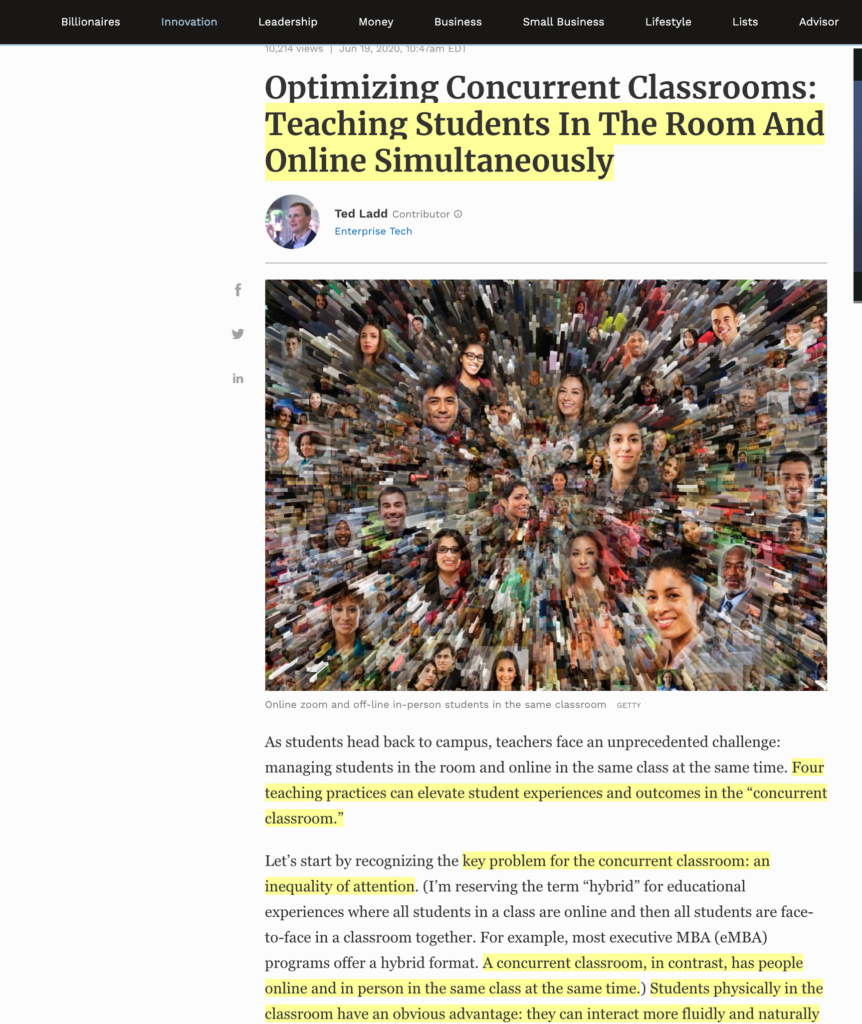I found this resource from what I think is an unusual source – Forbes. The article identifies the challenges of teaching in a concurrent classroom. As I understand what is meant by concurrent as compared with a hybrid classroom, in a concurrent situation some students are always FTF and some always online. This would be the way I have taught my Instructional Design and Technology grad classes and I admit I never thought about the unique challenges of this arrangement. Concurrent can be contrasted with hybrid which means students rotate between being FTF and online. This arrangement seems what many K12 schools are planning for the Fall in order to reduce the number of students present in the physical classroom. Some issues are likely the same so it is worth reviewing the Forbes article for educators facing a hybrid arrangement in the Fall.
Problems:
The major problem in a concurrent arrangement is described as inequality of attention. This results from the limitations and predictable failures of being online (forgetting to mute, sound dropping out) and educator failures (tendency to focus on students in front of you, drifting out of the view of the camera).
Solutions:
Use a flipped classroom approach for any block of teacher presentation longer than 10 minutes. So students receive information presentation and demonstrations via video. The author then describe what happens with working synchronously as talk less and smile more.
Make frequent use of output-oriented breakout tasks. Students both in the FTF and online work in teams (learn how to do this in your video environment) on short duration tasks with the requirement of reporting a solution of position
Alternate gaze – Remember to focus both on the camera and students in front of you. I know this is an issue from personal experience. The article recommends even finding ways to remind yourself to do this. Calling on students is another way to do this. Call on students both FTF and online.
Asynchronous presentations – have student groups create short presentations on assigned topics/issues. Store links to these presentations in Google docs (note skills that would have to be developed). Assign students to these different presentations and ask that they add questions after reviewing the content.
The article notes that these could also be argued to be reasonable ideas for traditional classroom instruction.
P.S. – I use a social bookmarking system called Diigo. An interesting feature (the social part) is that you can designate entries for access by the public. There is a way to offer access to a specific entry in this collection and that is what I have added below. The free Diigo extension must be installed to see the annotations of another Diigo user.
What you see when viewing a shared Diigo bookmark [with the Diigo extension] should look something like the following.

862 total views
You must be logged in to post a comment.